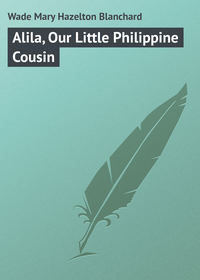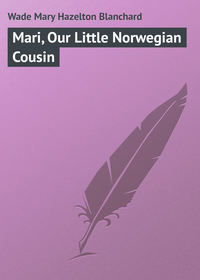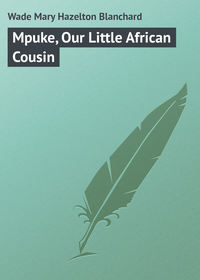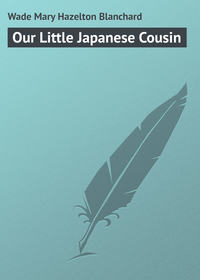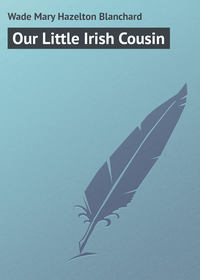 полная версия
полная версияLittle Folks of North America
When the Spaniards had no more Indians to work for them, they sent ships to Africa for Negroes who should serve them as slaves on their plantations. Now, however, the Negroes have all been freed. Hayti, one of the islands, is divided into two small republics of black people. In the other islands most of the workmen are black, for these people can bear a great deal of heat and can stay all day long in the sugar and tobacco fields without harm, when white men would suffer from sunstroke.
HurricanesThere is one time of the year which the children of the West Indies do not enjoy. This is the season of hurricanes. It is because of these that most of the houses are only one story high, for the winds are so strong and terrible then that the strongest buildings are in danger.
As the time draws near when hurricanes are expected, boats are drawn up along the shore, roofs are patched and made tight, and everyone watches the sky for the dread signs. Then, as the clouds gather and the birds take flight into the depths of the forest, the children run home to their parents for safety. If they live in the country the whole family will sometimes leave the house and seek safety in a stone cavern, built on purpose for their protection in the hurricane season. There the people will stay till the wind has done its work and passed on. When they leave their hiding-place they often find that great harm has been done; noble trees lie stretched on the ground, the crops have been destroyed, and the glass of the house windows is shattered. They look about them at the world that is once more so beautiful and peaceful, and take long breaths as they think, “Perhaps there will be no more danger for us for another long year and that is a long way off. We will not worry.”
In the WoodsThere are no large animals in the forests of the West Indies to frighten the children, but among the grasses and beautiful plants that grow everywhere about them there are many insects that might do them harm. Scorpions, which belong to the spider family, may give painful bites, and centipedes with their hundred legs, must also be watched for. Then there are mosquitoes without number, and chigos as the children call them, which creep between the tender skins of the white people’s toes and make poisonous sores, but seldom trouble those of the Negroes.
“I must not go far into the woods when I am alone,” think many small boys and girls, for they are afraid they may meet a wild dog which they are quite sure is a most fierce and dangerous animal. But the children have little to fear on this account, for wild dogs are so scarce that few people have ever met them. Long ago in Mexico, in the time of the Aztecs, and in the West Indies before the coming of the white men there, it is said there were such creatures in the forests, but now they are rare indeed.
Sometimes the children meet a strange kind of army when they are walking in the woods or driving along the country roads. This army is composed of huge land crabs who go once a year from their home on the mountain sides to the sea. There are often hundreds in this army, which marches slowly but steadily onward, through patches of woods, across roads, and over fields of tobacco. After the journey is once begun, it is said that the crabs do not rest till the ocean lies before them.
The children of the West Indies spend much time training beautiful parrots caught in the woods not far from their homes; they gather firebugs so brilliant that on summer evenings the tiny insects light up their gardens, making them appear like fairyland; they can listen to the singing-tree that makes a soft cooing noise when the breeze stirs its branches; they can gather limes and lemons, breadfruit and oranges in their own groves.
Among the Sugar-canesMany children of the West Indies live on large plantations where tobacco and sugar are raised. As you drive along through the country you will pass broad fields covered with tobacco plants whose glossy leaves spread out in the sunlight. Workmen are constantly busy caring for the plants and watching lest troublesome insects injure the leaves.
Again, you will see before you wide fields of what seems at first to be corn, but as you draw nearer you discover that the stalks are much taller. It is the sugar-cane which grows so high that a man on horseback may hide himself in its midst. A great deal of the West Indian sugar is raised in Cuba where the plantations are so large that they seem like small villages in themselves.
Let us visit the children of a sugar planter. We pass through a wide driveway of beautiful trees and arrive in front of a large, one-story house with wide verandas. Flowering vines trail over the trellises. The door is opened by a smiling Negro maid with a gaily-colored ’kerchief wound around her woolly head. She shows you into the drawing-room where a dark-eyed lady in white is sitting in a lounging chair. It is the mother of your little Cuban friends, whom you have come to visit. She speaks to you in a sweet, low voice and smiles so pleasantly that you feel at home at once.
A moment afterwards the children appear. They are slim and dark-skinned like their mother; perhaps they are bare-footed, or they may have sandals on their feet. They take delight in making you welcome, and in showing you over the plantation. First, they wish you to see their gardens, where roses and lilies, oleanders and jessamines fill the air with sweetness.
After this, it may be, they call to a young Negro not much older than themselves, who leads some ponies from the stable so that you may all ride over the plantation, since it stretches over the country for several miles.
In a few minutes you are out in the sugar fields where you are obliged to look up to see the tops of the canes. They are jointed like corn-stalks, and contain a sweet liquid, as you find out after breaking off a young cane and chewing it. The white overseer is riding here and there, directing the Negroes at their work, for the cane is ripe and the men are busy cutting it down and piling it in loads to be taken to the mill.
You follow one of these loads and soon reach the sugar mill where iron rollers crush the canes and squeeze out the juice. In another building near by there are big fires over which the sweet syrup is kept boiling in copper pans until it is so thick that it will form into crystals. Then it is poured into wooden coolers; last of all, when it is quite cold, it is placed in hogsheads with holes in the bottom. There it is left for several weeks while the molasses drips, drop by drop, through the holes, leaving the clear sugar inside.
Your little Cuban friends may tell you with much pride that their island home is the largest sugar market in the world and that the hogsheads of sugar you have just seen will be sent to the city of Havana not far away and there be loaded on ships which will carry the sugar to the United States and other countries.
No doubt the little Cubans will ask you if you have seen the big fortress called Morro Castle which defends the harbor of Havana. It is so strong they feel quite sure that enemies would be afraid to pass it.
Before you leave the plantation your friends take you to visit the homes of the Negro workmen, which are only small huts. Many of them have small gardens where melons and sweet potatoes are sure to be found. Although the huts are small, the families who live in them are large, and groups of little “darkies” some of whom are quite naked, are playing about and smile as you pass them, showing broad rows of white teeth, and rolling their eyes in such a funny way that you laugh in spite of yourself.
The children of the West Indies have good reasons to be happy and loving. The people do not need to work hard; a little food and a few clothes, a simple home and a hammock to swing in, are enough to make anyone comfortable in the hot lands. How different such a life is from the toiling and struggle of the people of the far north, who meet danger and trouble every day in their search for the wild animals which furnish them with all they have, – food, fuel, and clothing.


